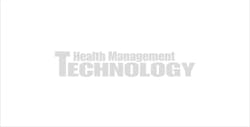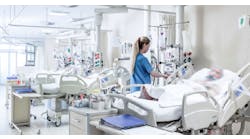Just about all healthcare organizations want to see as many patients as possible – as efficiently as possible. Doing so makes sense, as a quick in-and-out operation typically results in happy providers, staff and, most importantly, patients.
Recently, however, seeing more patients in a timely manner turned from a “nice-to-have” to a non-negotiable “must-have” here at Nor-Lea Hospital District. Our not-for-profit, community-based healthcare organization owns and operates Nor-Lea General Hospital and several clinics serving New Mexico’s Lea County, where the population has been growing rapidly due to a boom in oil-gas exploration.
In the fall of 2013, for example, the population already had increased 16 percent from the last census, and it was expected to jump up another 16 to 20 percent in 2014, as the oil and gas economy here continued to prosper.
With all these people migrating to the area, handling increased demand quickly became a common challenge for all businesses in this “boom town.” Real estate developers were building apartment complexes to handle the demand for housing. Hotels were experiencing huge nightly upticks in reservations. Even fast food restaurants were trying to eliminate hour-long waits for burgers. In short, our entire region was pushed beyond capacity, including Nor-Lea. Our Emergency Department and walk-in Evening Clinic were experiencing hours-long waits, and patients complained regularly about having to schedule appointments with their physicians weeks or even months out.
A rapid response to improve patient flow in real time
This population growth and the resulting impact on wait times and patient access prompted us to take action. First, we had to find a way to see more patients in a timely manner at our existing facilities. Second, we needed to ensure that when we did add facilities to handle this population surge, we would do so in a manner that would optimally utilize our resources.
So, to start, leaders set out to reduce wait times while also improving patient flow and staff utilization. We did so by implementing a workflow solution from Versus Technology utilizing a real-time locating system (RTLS) in two existing outpatient clinics (our Evening Clinic and our Lovington Clinic) as well as in the hospital’s Emergency Department.
Here’s how it works: When patients come into central registration, they are registered and then provided with a small, lightweight Versusbadge that emits low-powered infrared and radio-frequency identification (RFID) signals. Through these signals, the system automatically tracks patient location and monitors interactions with staff. Using a sophisticated rules-based workflow engine and integrations to Nor-Lea’s electronic health record (EHR), lab and scheduling systems, clinicians and other staff members always have a real-time handle on:
- Where patients are and how long they’ve been waiting;
- Which ancillary services have been ordered and which are ready;
- Which patients are ready to see a provider; and
- Which rooms are available, assigned or in need of cleaning.
With this real-time information available to all clinicians and staff members, it’s easy to speed up the patient flow. Instead of continually checking the waiting room and constantly communicating with each other about the status of various patient care tasks, physicians and other staff members can simply consult the RTLS system and immediately know what actions to take to keep patients moving throughout the facility.
Data for continual process improvement
In addition to checking the information in real time, we also routinely leverage the historical, analytical data that has been collected through the RTLS reporting module. In fact, sharing these analytics with staff makes it possible to pinpoint both areas for improvement and best practices – ultimately helping to fine tune the patient flow and workflow processes.
As a result, patient wait times in the outpatient clinics have been cut in half, from an average of 30 minutes to just 15 minutes. The improved patient flow enabled the Evening Clinic to serve 475 patients per provider per month in June 2014, up from 319 in June 2013, an increase of 49 percent per provider.
At the Lovington Clinic, more efficient patient flow made it possible to not only see more patients, but also to use our exam spaces more efficiently, increasing the number of providers working in the facility. As a result, the Lovington facility is now serving 45 percent more patients, from 3,300 per month in June 2014 to 4,788 patients per month in December 2014.
In addition, we have put together cross-functional teams to examine the analytical reports and come up with strategies to improve overall patient flow and workflow throughout the clinics. Such evaluation is helping us proactively develop patient flow and workflow strategies.
Empowered with both real-time and longitudinal data from the RTLS, the performance improvement team has identified the following strategies that we recently implemented:
Elimination of the registration desk. Under the former patient flow scenario, all patients filled out forms at the registration desk before receiving their RFID badge. As such, there was no way to measure how long the actual registration process was taking. Now, however, all patients are pre-registered on the phone. Instead, they immediately receive their badges when entering the clinic – and their total door-to-door time in the facility is documented via the RTLS.
Assigning more staff to each physician. Previously, physicians would spend considerable amounts of time each day looking for staff members between patient appointments. Frequently, the medical assistants would be helping another doctor or attending to a patient – and the physician would have to wait before working with the next patient. As a result, we are now assigning two dedicated medical assistants to each provider. This team of three is then able to work in unison – making it possible to streamline the patient flow process. Under this scenario, one medical assistant stays with the patient from start to finish, while the other medical assistant is preparing the next patient for the doctor.
With these interventions in place, there is no longer a need to book one-hour appointments that enable the physicians to “catch up.” We are now booking patients for 15-minute and 30-minute slots. One doctor, as a matter of fact, is exclusively booking 15-minute appointments. The providers are working in only two exam rooms each instead of three, making better use of our resources and further streamlining workflow.
Perhaps most important, though: patients are happy with the service they are receiving. Since implementing the system, the number of complaints about wait times and the ability to schedule an appointment has been reduced to practically zero.
Yet we are still striving to leverage the system to make our customer care even better. More specifically, we are working toward implementing a complete self-rooming process. Under such a scenario, patients will receive the Versus badges upon arrival and will immediately follow directions to an open exam room, eliminating the waiting room and staff escort.
An enthusiastic embrace
While the RTLS technology enables healthcare organizations to add capacity by improving patient flow and staff work processes in the moment, Nor-Lea has gotten the most from the system by leveraging both its real-time and analytical capabilities.
In essence, instead of merely implementing the RTLS and using the real-time data, we have proactively invited all physicians and staff members to use historical analytics to drive various improvement strategies. In this way, the system has become a critical component of our strategic performance improvement program.
In the final analysis, this system allows us to quickly identify and implement workflow improvement strategies, making it possible to handle the growing demand for healthcare in what has become a real boom town. That is a big plus for clinicians, staff and, of course, the many patients who walk through our doors looking for quality care and exceptional service.


